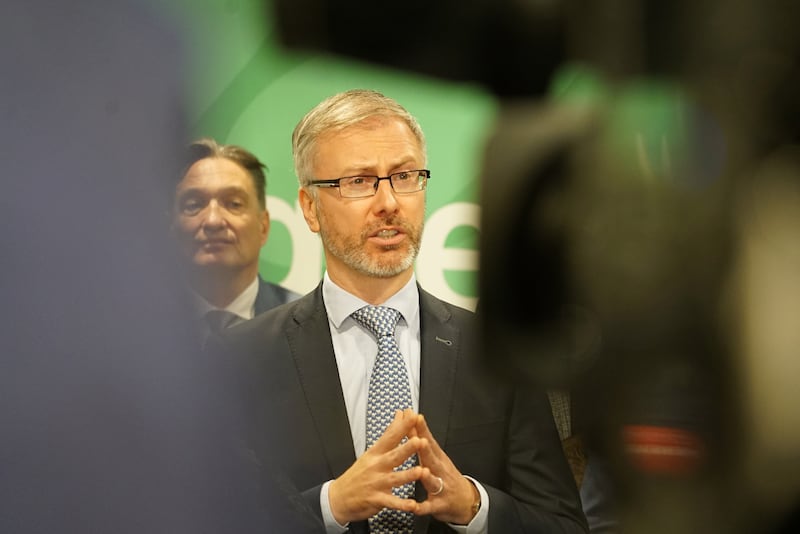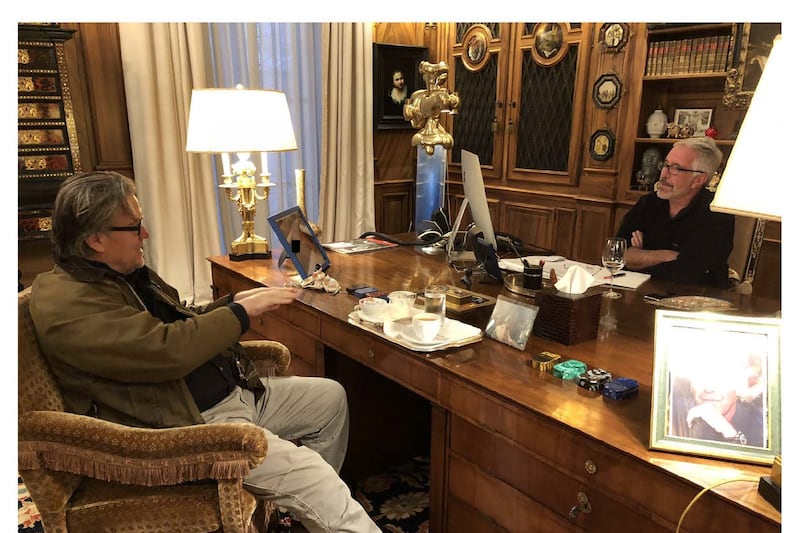The 2024 general election campaign comes after a period of exceptional turbulence in Irish politics which saw the abrupt departure of a Taoiseach, an unexpected collapse in support for the main opposition party and the emergence of immigration as an issue in political debate for the first time.
If political volatility is ever more the order of the day, with declining voter loyalty to any and all parties making our politics more unpredictable than ever, then that means the election campaign is now more important than ever. Exit polls in 2020 showed that more than half of all voters made up their minds on how to vote during the campaign. Make no mistake, the election will be won and lost over the next 23 days.
So what is the state of Irish politics as the campaign kicks off? The Government, as a whole, is in reasonable shape, opinion polls suggest. Polling averages bear out the most recent Irish Times/Ipsos B&A set of numbers and show Fine Gael performing strongly in the mid-20s, Fianna Fáil hovering around the 20 per cent mark and the Greens still just about keeping their heads above water at 4 or 5 per cent. There has been an increase in support for Fine Gael since Simon Harris took over as leader and Taoiseach.
The aggregate support for the Government parties, after four and a half years in power, is about the same as it was when they formed the Coalition in the summer of 2020. In an age when the necessary compromises of office often drain incumbent governments of support, this is no mean achievement and suggests that the return of the current three-party Coalition is possible; in fact, among the several potential outcomes, it is now among the more likely.
READ MORE
The Government’s success at holding its numbers up at about 50 per cent comes after perhaps the most atypical term of office in the history of Irish governments. The pandemic, the Russian invasion of Ukraine, the cost of living crisis, the extraordinary boom in corporation tax revenues, bookended by the gift of the Apple tax judgment – it has been quite the rollercoaster.
Financially, this has been an administration that was more fortunate than any of its predecessors. The bulging exchequer allowed it to throw money at most problems and it has done so enthusiastically. Its numbers suggest that recent sniffiness about the budget splurge should not be taken too seriously; voters are unlikely to object too strenuously to being showered with money.
Even with expectations drastically reduced, the local and European election at the start of May were a shock and a disaster for Sinn Féin
The election of Donald Trump may also fuel a fear of change, or a sort of flight to safety, among voters suddenly worried about the future of the Irish economy, more exposed to upheavals in US economic and trade policy than any of its EU counterparts.
The relationship between the Coalition’s three components remains complicated and will probably get more so. The recent popularity of Simon Harris has unnerved Fianna Fáil, and things have become noticeably scratchy at the very top. Perhaps that is to be expected; perhaps the principals will try to manage the dynamic during the campaign, lest they poison the well for post-election negotiations; or perhaps they’ll let fly and deal with it later. It will be something to watch.

Neither of the two big parties are exactly in love with the Greens, or the prospect of doing business with them again. In rural Ireland, especially, many traditional Fine Gael and Fianna Fáil voters are positively anti-Green. Some of them loathe Eamon Ryan; they’re not wild about Roderic O’Gorman either.
But, but, but – the Greens have proved to be reliable Coalition partners. They have fought their corner ferociously on occasion, for sure. And they made a hard bargain back in 2020; but then they stuck to it. That is, above all, what you want in a Coalition partner.
Whether the Greens are able or willing to do another Coalition deal is a question that will be decided by fine margins – the fate of small parties in Ireland is often decided by small swings in the national vote exaggerated in a handful of constituencies. The Greens are living on the edge, and they know it.
So much for the Government: what about the Opposition?
Sinn Féin has had a torrid year; so has its leader Mary Lou McDonald, personally and politically. This time last year, the party was odds-on favourite in most places to lead the next government. The only question was whether it would be as the head of a left-wing government that excluded both Fine Gael and Fianna Fáil, or leading a Coalition with a smaller (and possibly much smaller) Fianna Fáil. The Fianna Fáil option always seemed more likely – assuming that party agreed. Some senior Sinn Féin figures believed this was a better bet too – one Coalition partner is always easier to manage than several.
Those assumptions have disappeared in the last 12 months. The slide in the party’s opinion poll rating, which had begun in the summer of last year after a long period in the mid-30s, accelerated in the first half of this year. But even with expectations drastically reduced, the local and European election at the start of May were a shock and a disaster for the party, with its vote dropping to 11 per cent. For so long, miles ahead of both Fianna Fáil and Fine Gael, and at one stage nearly as popular as the two old rivals combined, Sinn Féin was now far behind both. It was a body blow to the party, rocking its confidence and the confidence of its leadership.
Over the summer, Sinn Féin licked its wounds and tried to figure out what went wrong. After an internal review, Mary Lou McDonald came out to say that her party was advising her to be her “authentic self”; it wasn’t clear that she had previously been her inauthentic self. The autumn polls were of the glass half-empty, glass half-full variety: back up to about 20 per cent, the party was well ahead of the local and Euros result, but far behind where it had been before those elections.
The recent spate of scandals have further damaged the party, with McDonald forced to issue a series of apologies, explanations, clarifications and statements about a bewildering array of controversies. They have been damaging not just in themselves but in that they have kept Sinn Fein from talking about what it wants to talk about.
And McDonald’s personal ratings continued to decline. The party’s leader was a big part of its success in surfing the wave of a great desire for political change in 2020, and she remains a formidable campaigner. But she will have to repeat that performance if the party is to triumph again. Maintaining a focus on housing will be the first priority for the party.
What next for Labour without its big beast?
The Labour Party will fight fiercely with the Social Democrats among voters who find it hard to tell the difference between them. The non-Sinn Féin centre-left is a congested ground in Irish politics: Labour vies with the Soc Dems and the Greens and, in some places, left-wing Independents. After the election, both the Greens and Labour say they might talk to like-minded parties about a centre-left bloc; the Soc Dems have been noticeably more circumspect on the notion.
Labour has lost big beast Aodhán Ó Ríordáin to the European Parliament, but had encouraging local election results on the same day, while the departure of former Green leader Eamon Ryan will take some of the pressure off party leader Ivana Bacik in Dublin Bay South. No such comfort for the Social Democrats leader Holly Cairns in Cork South West, who will have a fight on her hands to hold her seat.
Smaller parties such as Aontú and People Before Profit will offer more ideological clarity, but will depend on strong candidates in a handful of constituencies.
Independents of all stripes will feature in every constituency, and are likely to return to the Dáil in significant numbers again. The new Independent Ireland party is an attempt to leverage the strength of the Independent brand and it may well be a force in the next Dáil and in the Coalition-making that comes at the start of it. But will they really function like a party? Can their leader guarantee his TDs will follow the Government whip? Their positions in opposition have not suggested a willingness to take the difficult decisions that are the daily business of a government.
There are several categories of Independents, and its impossible to categorise them as an homogenous group. But one type of Independent/small party candidate will be the subject of special interest in this campaign: those representing the new far-right that has emerged on the streets and online and – in May’s local and European elections – on the ballot paper.
There are candidates who are outright Ireland-for-the-Irish, anti-migrant, send-them-home racists. And there are those who are legitimately concerned about migration in communities that are already under pressure. And there are those who are just opportunists. The distinctions between these are not always clear.
Taken together, however, they represent something new in Irish politics. As survey after survey tells us, immigration – an unsatisfactory, umbrella term that draws no distinction between Palestinian asylum seekers, Indian brain surgeons and Brazilian Deliveroo riders – will be a major issue in this election. That has not happened before. The dynamics of politics continue to evolve at a rapid pace.
- Listen to our Inside Politics Podcast for the latest analysis and chat
- Sign up for push alerts and have the best news, analysis and comment delivered directly to your phone
- Find The Irish Times on WhatsApp and stay up to date
















